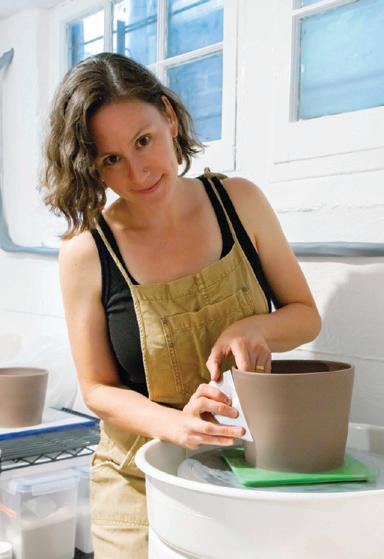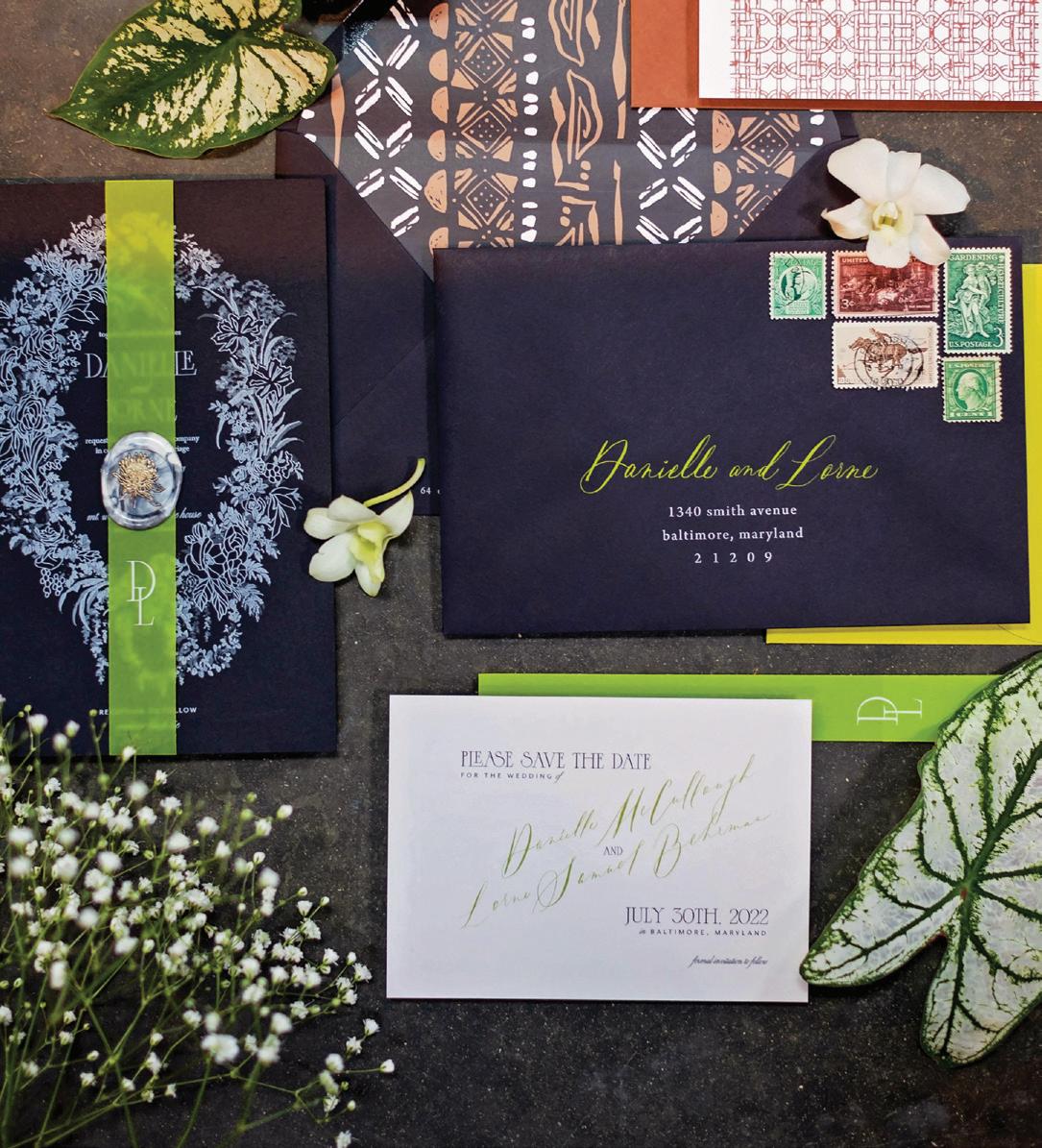
5 minute read
Shop Local
by Colleen Kennedy
Gold Standard
Advertisement
Maria Irene Weinz wants to protect the natural world that inspires her art. “The idea is to make beautiful things in a very simple way with minimal impact,” says the Arlington jewelry designer.
Born in Colombia, Weinz is a world traveler who learned scuba diving at a young age. Her love of the ocean is reflected in delicate earrings resembling sea urchins; shimmering, shell-like necklaces; and wide-band rings that evoke beachy strands.
She first became interested in jewelry-making in 2003 while visiting her mother in Bogotá and touring the Museum of Gold—a vast collection of pre-Columbian jewelry and art objects. She subsequently apprenticed with a local goldsmith, and in 2009, enrolled in the Corcoran School of the Arts & Design’s (now-defunct) metalsmithing and jewelry program in D.C.
Since then, Weinz has studied sustainable practices through the Ohio-based nonprofit collective Ethical Metalsmiths.
“When I was working in the [Georgetown] studio at Corcoran, I could see the waste and all the chemicals we used,” she says. “I knew my home studio had to be ecofriendly. I became really obsessed with this idea of not using anything that was harmful to people or to the environment.”
Today she purchases metals from Fairmined, a global consortium (based in Colombia) dedicated to mining precious metals with minimal ecological impact. The organization also offers support—such as creating rural schools—to artisanal miners and their families, and ensures that toxic chemicals such as cyanide and mercury are neither used in the processing of metals nor emptied into local waterways.
Working from her home studio in Arlington’s Radnor/Fort Myer Heights neighborhood, Weinz uses recycled gemstones and lab-grown diamonds, and recycles most of her metal waste. Her minimalist pieces range from $60 to $4,500, depending on the metal, stones and intricacy of the design, and each is marked with a Fairmined stamp. Going forward, she aims to make each piece of jewelry traceable via unique digital fingerprint, so that the owners of her creations can see the eco-minded decisions that guided each step of her process.
Accountability is key, she says. “There can be no more greenwashing.” ireneweinz.com

A handcrafted oboe reed in progress
Woodwinds and Clay
The double reeds of an oboe are as individual as a kiss, shaped for the oboist’s lips and unique playing style, but many musicians lack the skills or patience to design their own reeds. A trained oboist, Bethany Slater studied woodwind performance at the Eastman School of Music in Rochester, New York. That’s where she began making reeds for fellow students.
“It snowballed from there,” she says of her 17 years creating and selling orchestral paraphernalia. Her design repertoire includes reeds for various woodwinds ($30-$32), reed cases ($85-$115) and wooden oboe stands ($85-$100)—and now, ceramics.

Bethany Slater
Slater delved into pottery after her husband gifted her classes in 2017. “If I hadn’t gone to music school, I would have gone to art school,” she says. These days, she has a dedicated pottery studio in her home, where she designs stoneware earrings ($28-$42), planters in pastel shades ($35-$96) and a variety of stoneware goods ($35 and up). Her ceramics can be found at popups and festivals around the DMV, with permanent locations at Shop Made in DC and Adams Morgan plant shop Plntr.
Music is still a parallel passion. Slater remains an actively performing oboist in Inscape Chamber Orchestra, a Grammy-nominated outfit that performs at venues throughout the region, including the National Gallery of Art, Strathmore Music Center and the Kennedy Center. “Reed-making is incredibly touchy,” she says. “Clay is also, to a certain extent, but I’ve dealt my whole life with organic materials—earth and plants—that you have to be thoughtful about to mold and make.” bethanyslater.com

Lasting Impressions
After designing her own wedding invitations in 2016, Patricia Okrasinski Heffner left behind a career in software engineering and founded Oh Eleven Studio (playing off the “O” and “H” in her name), a company specializing in bespoke wedding stationery.
The business that began in Rosslyn has since migrated—along with its proprietor—to a home studio in Alexandria, where a letterpress machine is surrounded by stacks of fine paper samples, imported inks and custom pen nibs. Heffner does most of her calligraphy by hand, and her finished pieces often have a tactile quality, with embossed lettering and homespun touches such as wax seals, thick brushstrokes, ribbon and tassels.
For one couple, “I created a Chinoiserie pattern of special places in the D.C. area,” she says. Another stationery design celebrated a pair’s Maryland roots with line sketches of crabs and hammers, and the Natty Boh beer and Utz potato chip icons reimagined as a bride and groom.
Heffner works closely with clients and wedding planners to translate each couple’s story into a visual language that extends to save-thedates, invitations and wedding-day pieces such as menus and place cards. Her services range from $2,500 for invitations to $10,000 for full stationery packages.
Ingenuity is included, as seen in one recent design incorporating industrial, factory-style lettering on recycled cotton paper. Heffner gave the paper a mottled texture by pressing walnut shells into the surface—one of her many tricks of the trade.
“My favorite thing is just creating things that are of meaning to the people getting married,” she says. In a style “that feels like them.” oheleven.com










